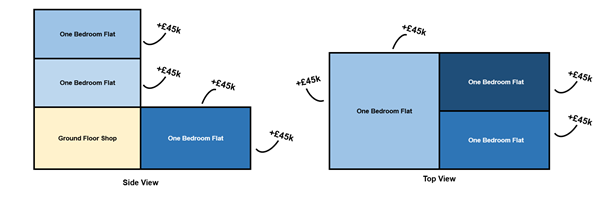Lock-In: Level Up to Develop
Series 4, Episode 3
Hosted: 09/06/2021 06:00:00 pm
Continuing on with our fourth season of LNPG’s Expert Lock-In, we welcomed property investor, mentor, and speaker, Kam Dovedi to the session who – aside from charming us with 80s catchphrases and haircut analogies – wanted to introduce us to the massive development opportunities available to landlords in 2021.
When One Door Closes
A huge window has opened this year for savvy landlords and developers to make the most out of recent changes in planning legislation.
We’re currently standing in the eye of a perfect storm: Bank of England interest rates are at the lowest they have ever been; on top of this, the UK government’s recent changes to planning (in an effort to get Britain building again) have been the largest since the end of the Second World War.
So that’s the good news, macro changes have created massive opportunities for landlords to take advantage of massive development opportunities this year…
– and here’s the catch.
This window is closing – circumstances won’t stay like this forever, in fact many recent planning changes are already scheduled for the chopping block later this year, so the time to act is now as soon as you finish reading this blog.
Your Very Own Itsy Bitsy Teenie Weenie Personal Financial Economy(nee)
Please excuse us for the next 100 or so words as we teach you how to suck your own financial eggs – because while this will be no surprise to 99% of landlords, it’s worth framing these opportunities by their position in your personal financial economy.
So, put simply – there are three major ways to grow your personal financial position in property:
- Earnings – primarily through employment; this is you effectively selling your time in exchange for whatever princely sum you can command in your career.
- Passive Income – which many landlords get in the game to achieve – most of the time it works out to be slightly less passive than you’d first think but it’s still a major difference to standard earnings through employment.
- Capital Gains – the (usually) long-term benefits of holding onto property – as property prices continue to rise, your net worth grows with them.
Kam’s perfect storm for property development sits pretty firmly in this third category, but there’s a twist – that long-term wait is exchanged for short-term action; getting you where you need to be, only quicker.
As Easy as E, E, E
Historically, any proposed development has been subject to the scrutiny of an unnecessarily convoluted Use Class Order System – meaning any changes you wanted to make between commercial or residential buildings could bet stuck before they’re started.
This has now been completely (although temporarily) overhauled to simplify the process – we’ll give you an example:
In the Use Class Order System, buildings are categorised into their intended purpose (aka Use Class) so a shop, financial or professional service, café or restaurant, would all be categorised differently – A1, A2, and A3 respectively.
The new changes have meant that not only have all of these use classes been merged into the same use class, but many others have joined them. More specifically, it means Use Classes A1, A2, A3, B1a, B1b, B1c, D1, and D2 have now all become Use Class E and can be modified within Permitted Development Rights without the need for planning.
What You Do With It
If you imagine the Use Class Order System as a categorisation of what the property is – you can think of the Permitted Development Order System as what the property does.
As with Use Class, the Permitted Development Order System categorises properties into lettered bands – but where Use Class Orders were merged, Permitted Development has been expanded to allow for greater flexibility with what you do with your new stock – including the all-important introduction of commercial conversion to residential or part-residential that Kam wanted to show off to us all.
Now, if you thought the last bit was complicated – well, you’d be right – but we’d definitely advise looking further into this before proceeding with any solid plans – in fact for a few specific questions members has, Kam was kind enough to offer his expert opinion at the end of our webinar.
Putting It All Together
Now we’re not going to bore you with all the specifics of legislative changes without showing you what you can do with it – so let’s take some time to delve into one of Kam’s own projects that made use of these recent changes.
Imagine a disused, empty, old shop – a large ground floor unit with two smaller floors of storage above it. It should look like this:

With the new changes to Use Class and Permitted Development Orders, Kam was able to convert half of the ground floor into two separate one-bedroom flats (using Permitted Development Class M) and both storeys of storage into two more one-bedroom flats (Class G – extracting approximately £45k in profit per flat.

Now that’s why he’s so enthusiastic about this opportunity!
And that’s your lot! To learn more about Premier Property, click here.

